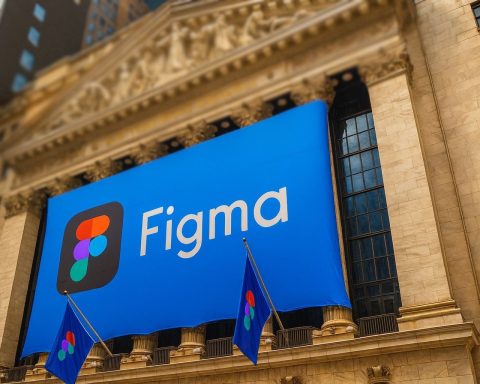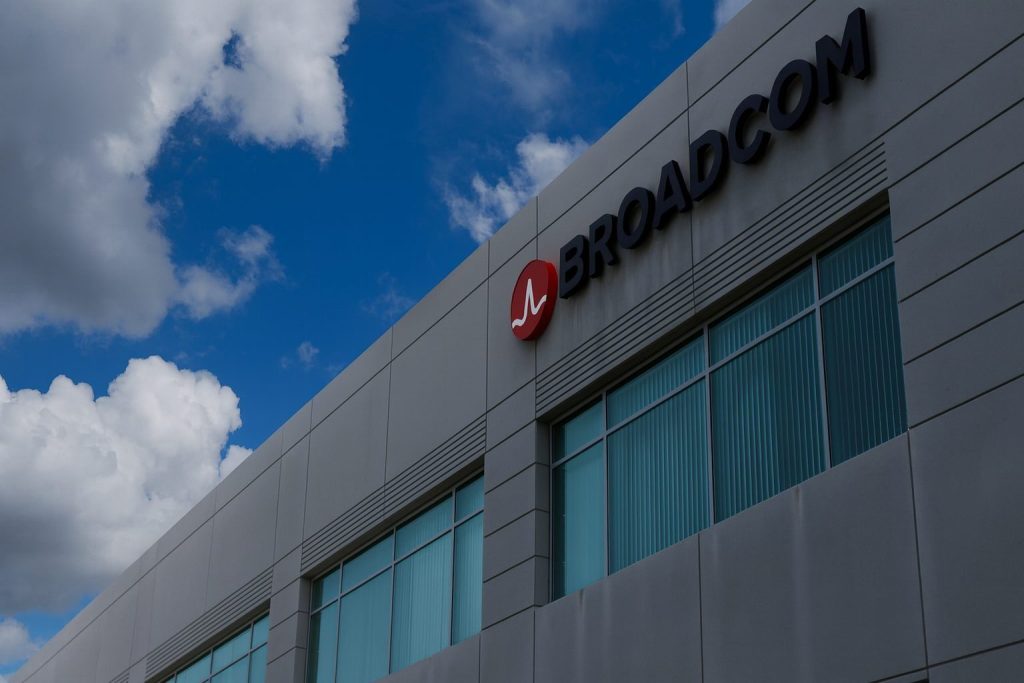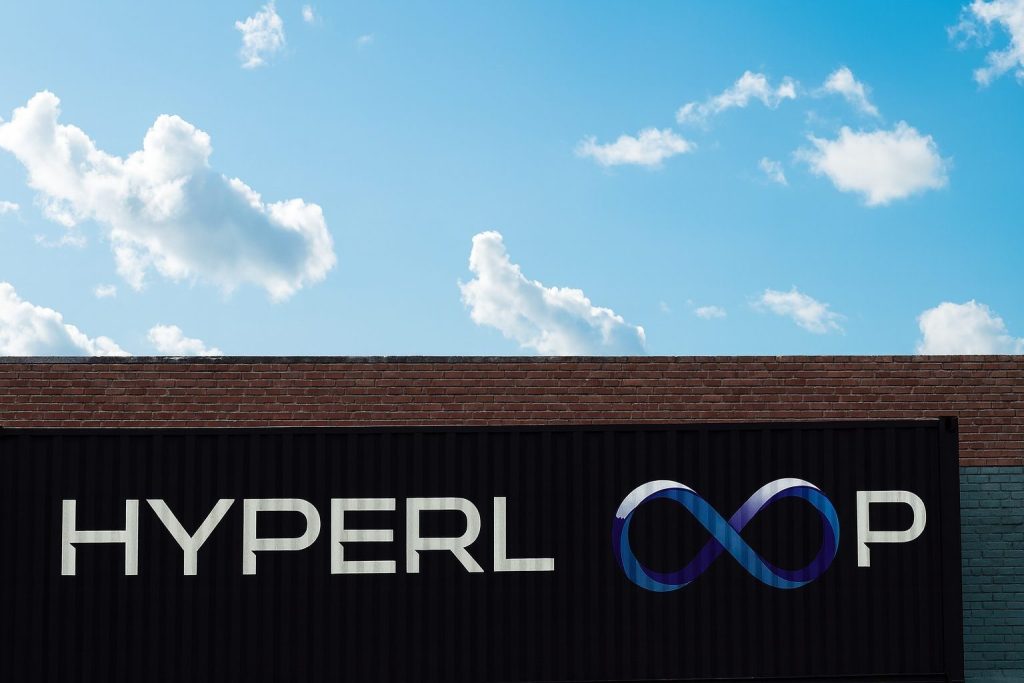On November 28, 2025, SMX (Security Matters) (NASDAQ: SMX) moved from niche traceability play to one of the market’s most closely watched microcaps.
In a single morning, the company pushed out a cluster of press releases tying its molecular‑marking technology to Dubai’s powerful gold hub DMCC (Dubai Multi Commodities Centre), to broader global trade identity, and to high‑stakes aerospace metals. At the same time, SMX stock — already up 42% earlier this week — appeared again among the market’s top gainers, with some trackers showing intraday moves near 90–100% and flagging the name as a “Top Gainer” with a tiny free float and elevated short interest. [1]
Here’s what actually changed today, why Dubai’s DMCC matters so much, and what investors and industry players should be watching next.
Dubai’s DMCC Shifts From Marketplace to Verification Authority
The centrepiece of today’s news is an Accesswire press release titled “SMX Supplied the Proof and Now DMCC is Rewriting the Gold Standard,” published at 08:30 a.m. New York time. [2]
In that update, SMX describes how Dubai — already a gravitational hub for gold and commodities — is repositioning itself from a trading venue to a verification authority. The release frames DMCC’s strategy around a simple thesis:
- Global commodities markets move fastest when trust is measured, not assumed.
- Stamps, paper certificates and relationships are no longer sufficient once metals move across multiple borders and regulatory regimes.
- SMX’s molecular verification technology is pitched as the missing layer: metals, minerals and industrial materials are tagged with a “chemical memory” so their identity follows them from origin to refinery to the trading floor. [3]
According to the company, DMCC’s embrace of that model marks an “inflection point” where Dubai uses verification — not just geography or infrastructure — to keep its leadership in gold and other metals. Older hubs, the release argues, will have to adjust to new rules that are effectively being written in Dubai in real time. [4]
‘Verified Gold’: DMCC and SMX Aim to Redefine Bullion
A second release today, “DMCC and the Rise of Verified Gold: How SMX Turned Dubai Into the Epicenter of Metallic Trust,” zooms in specifically on gold and silver. [5]
Key points from that announcement:
- SMX embeds chemical markers directly into gold and silver, creating a molecular identity that is designed to survive melting, recasting and re‑stamping.
- DMCC plans to integrate this material‑level verification into refining, trading and vaulting operations in Dubai so that each bar can be authenticated independently of its paperwork. [6]
- The pitch is that “verified bullion” could settle faster, face fewer compliance hurdles, and reduce disputes over provenance, which DMCC and SMX say should translate into a market premium for verified bars over conventional bullion. [7]
This builds on earlier messaging this week, where SMX argued that verified gold will trade at a premium because investors and institutions increasingly prioritize traceability, ethical sourcing and regulatory alignment. [8]
If DMCC can convince major refiners, exchanges, banks and custodians to recognize this material identity layer, Dubai could position itself as the global hub for bullion that proves its purity and origin rather than asking markets to take those claims on trust.
Identity as the New Asset in Global Trade
Gold isn’t the only story. A third release today, “How SMX Turned Identity Into the Most Valuable Asset in Global Trade,” broadens the scope from precious metals to global supply chains. [9]
The message:
- For decades, supply chains have relied on paperwork — bills of lading, certificates, declarations — as the proxy for truth.
- SMX argues that the next phase of trade will rely on materials that verify themselves, using molecular identity embedded directly into metals, minerals, plastics, textiles and other industrial inputs. [10]
- Dubai’s DMCC is described as one of the first major hubs to reorganize around this principle, aiming to become a “verification capital” where high‑value materials leave the emirate with a confirmed, machine‑readable identity that regulators and buyers recognize across multiple continents. [11]
The release explicitly links this identity layer to rising regulatory pressure:
- Europe’s Corporate Sustainability Reporting Directive (CSRD) and digital product passport rules, which are pushing companies to prove where materials come from and how they’re processed.
- The United States’ Uyghur Forced Labor Prevention Act (UFLPA), which requires evidence of origin for goods that could involve sensitive regions.
- Stricter rules in parts of Asia around recycled content, emissions data and labour transparency. [12]
SMX’s claim is that material‑based verification can turn inventory into “self‑reporting” assets that move faster through ports, compliance checkpoints and customs because they carry cryptographically linked physical proof, not just documents that can be forged or misplaced.
Beyond Gold: SMX Targets Aerospace Metals
Today’s fourth major announcement shifts from bullion and logistics to the aerospace and defense supply chain.
In “SMX Brings Verification to the Metals That Keep the World in Motion,” SMX introduces molecular‑level verification for aerospace metals — specifically titanium, vanadium and specialty alloys used in critical components. [13]
According to the company:
- Durable chemical signatures are embedded into these metals so they survive melting, forging, machining and heat treatment, creating a permanent traceability path from ore to finished part. [14]
- The goal is to replace fragile, separable certificates with metals that can self‑confirm origin, purity and processing history, acting as a front‑end verification layer for aerospace, defense, automotive, energy and advanced manufacturing supply chains. [15]
- SMX insists that this system is designed to meet traceability requirements without slowing production, so manufacturers don’t have to trade throughput for compliance. [16]
If regulators and major OEMs accept this approach, it could address long‑running concerns about counterfeit, diverted or off‑spec metals entering high‑reliability applications. But it also introduces new questions: how these markers are certified, how long they remain readable under real‑world conditions, and which standards bodies will endorse them.
How the DMCC 2025 Conference Set the Stage
None of today’s announcements came out of nowhere. They’re part of a build‑up around the DMCC 2025 Precious Metals Conference in Dubai.
In the days leading into the conference, SMX released a series of narratives:
- “SMX Brings the First Real Tech Revolution to Gold Since the Refining Age” – positioning material‑embedded verification as a step change from traditional assaying and stamping. [17]
- “SMX: Verified Gold Will Trade at a Premium and Here’s Why” – arguing that investors will adopt verified bullion because it is safer and cleaner from an ESG and regulatory standpoint, not just because it is new. [18]
- “DMCC 2025 Metals Conference Just Released the Next Chapter of Gold, and SMX Was its Author” – framing DMCC as the global stage where SMX’s proof‑of‑concept across multiple sectors (gold, rubber, textiles) was presented to the metals industry. [19]
- “Six Partnership Wins In, SMX Took Dubai Gold to a New Standard” and related releases detailed how six partnerships across materials gave SMX the empirical data it believes the gold market had been waiting for. [20]
At the conference itself, SMX showcased case studies: tracking natural rubber from plantations through high‑temperature processing, applying molecular identity to textiles ahead of digital product passport rules, and linking all of this back to DMCC’s broader ambition to become a proof‑driven trade hub rather than a purely logistics‑driven one. [21]
In other words, today’s news formalizes what Dubai and SMX have been signaling all week: verification as strategy, not just compliance.
SMX Stock: From Obscure Microcap to Top Gainer
The market has taken notice.
The 42% spike on November 26
On Wednesday, November 26, SMX shares surged around 42% after the company presented its physical‑to‑digital link technology at the DMCC Precious Metals Conference. A StockTwits news article noted that SMX’s patented molecular‑marking system assigns a unique identity to each piece of metal and links it to a secure digital record, enabling fully traceable ownership across the metal’s lifecycle. [22]
That same piece highlighted several catalysts:
- The technology’s alignment with World Gold Council best practices and London Bullion Market Association (LBMA) guidance on transparency and responsible sourcing.
- The potential to underpin new digital ownership models for metals without relying on speculative token frameworks.
- A sharp swing in retail sentiment on StockTwits from “neutral” to “extremely bullish”, with high message volumes and some users openly speculating that the stock could more than double. [23]
The rally came shortly after SMX completed an 8‑to‑1 reverse stock split on November 18, which consolidated every eight ordinary shares into one new share and reduced the outstanding share count from roughly 8.4 million to about 1.05 million. [24]
Reverse splits don’t change a company’s fundamentals, but they often:
- Lift the share price above minimum listing thresholds (e.g., Nasdaq’s $1 rule).
- Make already‑small floats even smaller, which can amplify volatility when volume spikes or short sellers are forced to cover.
A volatile, crowded trade on November 28
By today, November 28, SMX has shown up on several “most volatile” and “top gainer” lists:
- StockTitan’s SMX page tags the stock as a Top Gainer, with one related article showing a daily move of roughly +89–96% in conjunction with the DMCC and identity announcements. [25]
- Data on that same page indicate a market cap around $18 million, an estimated free float of only ~114,000 shares and short interest above 22%, a combination that can fuel outsized price swings in either direction. [26]
An additional analysis article this week framed SMX’s earlier 42% surge as more than just a meme move, arguing that the stock’s reaction reflects genuine investor interest in solving fraud and opacity in metals markets and aligning with ESG and regulatory themes. That piece, however, is opinion, not a consensus forecast. [27]
Taken together, SMX now sits in the classic high‑beta, high‑narrative microcap bucket:
- Real technology with visible industrial partners and a marquee hub (DMCC) willing to lean in.
- Heavy reliance on press‑release storytelling and forward‑looking narratives.
- Extremely small float and meaningful short interest, making the stock vulnerable to both sharp rallies and equally sharp pullbacks.
What This Could Mean for Gold and Metals Markets
If DMCC and SMX execute on even part of what they announced today, several structural shifts could follow over the next few years.
For the gold market
- Traceable bullion as default: Material‑embedded identity would make it much harder for illicit, conflict‑linked or mis‑labelled gold to slip into global supply chains without detection, especially if major refiners and exchanges outside Dubai accept the markers. [28]
- Premiums for verified bars: If verified bars settle faster, incur fewer compliance delays and reduce reputational risk, banks, central banks and institutional buyers may be willing to pay a premium — just as they already do for certain provenance‑linked or responsibly sourced products. That’s SMX’s explicit thesis, though the premium level hasn’t been quantified. [29]
- Shift in trade routes: In SMX’s view, trade will gradually reorganize around verification hubs rather than purely historical hubs. If Dubai becomes the leading hub for verified bullion, some flows currently routed through London, Zurich or other centres could be redirected. [30]
For aerospace and advanced manufacturing
- Tighter control of critical metals: Embedding identity into titanium and other alloys could help aerospace and defense players ensure they are not using counterfeit or off‑spec material, addressing a perennial safety and compliance risk. [31]
- Streamlined audits and certifications: If regulators and certifying bodies accept molecular markers as a valid proof of origin and processing history, manufacturers could move away from complex document chains toward direct material testing, potentially lowering audit costs and delays. [32]
However, all of this depends on adoption:
- Regulators, exchanges, OEMs and insurers will need to trust and standardize around these markers.
- Competing traceability technologies and standards may emerge.
- SMX will need to prove that its markers are robust in real‑world conditions, scalable at industrial volumes and economically attractive compared to incumbent systems.
Key Questions for Investors and Industry to Watch
Given today’s developments, here are the practical checkpoints that matter more than the day‑to‑day share price:
- DMCC roll‑out details
- How quickly does DMCC move from concept to a formal Verified Gold program with specific rules, bar classes and fees?
- Will DMCC publish metrics on the share of gold and silver moving through Dubai that carries SMX’s markers?
- Cross‑border acceptance
- Do exchanges and refiners outside Dubai begin to treat SMX‑verified bars as a distinct category?
- Will central banks, bullion banks or large ETFs explicitly reference material‑level verification in their sourcing policies?
- Real contracts in aerospace and other sectors
- Beyond today’s aerospace metals launch, which named customers or pilot programs adopt SMX’s verification stack?
- Are there any regulatory or defense‑related approvals that recognize molecular identity as part of compliance?
- Revenue and margin traction
- How do these announcements translate into recurring revenue, not just PR momentum?
- What does the cost structure look like for marking and verifying metals at scale?
- Capital structure and liquidity
- With a very small float and notable short interest, how does SMX manage future capital needs without destabilizing its share base? [33]
Bottom Line
On November 28, 2025, SMX and Dubai’s DMCC tried to do more than launch another traceability product. They pitched a world where materials themselves become the source of truth, starting with gold bars in Dubai vaults and extending to aerospace metals and complex global supply chains.
The market has rewarded that story — at least for now — with a dramatic re‑rating of SMX’s tiny equity float. But the real test will come not in intraday spikes, but in the slow, technical work of turning conference‑stage narratives into standards, contracts and regulations that outlive a single trading week.
This article is based on publicly available company press releases, stock‑market data and independent news coverage dated through November 28, 2025. It is provided for informational purposes only and does not constitute investment advice, a recommendation to buy or sell any security, or a guarantee of future performance.
References
1. stocktwits.com, 2. www.accessnewswire.com, 3. www.accessnewswire.com, 4. www.accessnewswire.com, 5. www.stocktitan.net, 6. www.stocktitan.net, 7. www.stocktitan.net, 8. www.nasdaq.com, 9. finviz.com, 10. www.stocktitan.net, 11. www.stocktitan.net, 12. www.stocktitan.net, 13. www.webdisclosure.com, 14. www.webdisclosure.com, 15. www.stocktitan.net, 16. www.stocktitan.net, 17. www.accessnewswire.com, 18. www.accessnewswire.com, 19. www.accessnewswire.com, 20. www.accessnewswire.com, 21. www.accessnewswire.com, 22. stocktwits.com, 23. stocktwits.com, 24. stocktwits.com, 25. www.stocktitan.net, 26. www.stocktitan.net, 27. www.ainvest.com, 28. www.stocktitan.net, 29. www.nasdaq.com, 30. www.stocktitan.net, 31. www.webdisclosure.com, 32. www.stocktitan.net, 33. www.stocktitan.net







